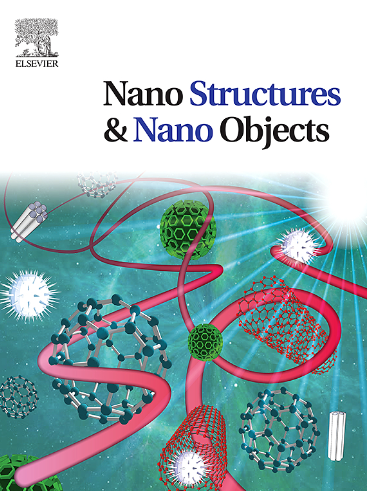赤铁矿纳米粒子电纺丝纳米纤维的制备及表征
IF 5.45
Q1 Physics and Astronomy
引用次数: 0
摘要
重金属因其毒性和持久性对人类健康和环境构成重大威胁。我们用聚ε-己内酯(PCL)和壳聚糖(CS)制备了电纺丝纳米纤维,并加入了赤铁矿纳米颗粒(HNPs),用于去除模拟溶液中的Cr6+和CS +。研究了pH、吸附剂用量、初始污染物浓度和接触时间对纳米纤维对Cr6+和Cs+去除率的影响。扫描电镜和能谱分析证实了两种污染物在纳米纤维上的吸附。在酸性条件下对Cr6+的吸附量最大,而在碱性条件下对Cs+的吸附量最大。等温线研究表明,吸附过程遵循Langmuir和Freundlich模型。伪动力学研究表明,吸附机理符合二级动力学模型。这些纳米纤维有效去除水中重金属的能力突出了它们在环境修复应用中的潜力。本文章由计算机程序翻译,如有差异,请以英文原文为准。
Fabrication and characterization of electrospun nanofibers infused with hematite nanoparticles for the remediation of heavy metals from aqueous medium
Heavy metals pose a significant threat to human health and the environment due to their toxicity and persistence. We have fabricated electrospun nanofibers with poly(ε-caprolactone) (PCL) and chitosan (CS), incorporating hematite nanoparticles (HNPs) and used to remove Cr6+ and Cs+ from simulated solutions. The nanofibers were characterized by various techniques and adsorption studies investigated the impact of pH, adsorbent dosage, initial contaminant concentration, and contact time on the removal efficiency of Cr6+ and Cs+. SEM and EDS analyses confirmed the adsorption of both contaminants onto the nanofibers. The maximum adsorption for Cr6+ was achieved under acidic conditions, while Cs+ adsorption was favoured in alkaline environments. Isotherm studies demonstrated that the adsorption process followed both Langmuir and Freundlich models. Additionally, pseudo-kinetic studies indicated that the adsorption mechanism adhered to a second-order kinetic model. The ability of these nanofibers to effectively remove heavy metals from water solutions highlights their potential for environmental remediation applications.
求助全文
通过发布文献求助,成功后即可免费获取论文全文。
去求助
来源期刊

Nano-Structures & Nano-Objects
Physics and Astronomy-Condensed Matter Physics
CiteScore
9.20
自引率
0.00%
发文量
60
审稿时长
22 days
期刊介绍:
Nano-Structures & Nano-Objects is a new journal devoted to all aspects of the synthesis and the properties of this new flourishing domain. The journal is devoted to novel architectures at the nano-level with an emphasis on new synthesis and characterization methods. The journal is focused on the objects rather than on their applications. However, the research for new applications of original nano-structures & nano-objects in various fields such as nano-electronics, energy conversion, catalysis, drug delivery and nano-medicine is also welcome. The scope of Nano-Structures & Nano-Objects involves: -Metal and alloy nanoparticles with complex nanostructures such as shape control, core-shell and dumbells -Oxide nanoparticles and nanostructures, with complex oxide/metal, oxide/surface and oxide /organic interfaces -Inorganic semi-conducting nanoparticles (quantum dots) with an emphasis on new phases, structures, shapes and complexity -Nanostructures involving molecular inorganic species such as nanoparticles of coordination compounds, molecular magnets, spin transition nanoparticles etc. or organic nano-objects, in particular for molecular electronics -Nanostructured materials such as nano-MOFs and nano-zeolites -Hetero-junctions between molecules and nano-objects, between different nano-objects & nanostructures or between nano-objects & nanostructures and surfaces -Methods of characterization specific of the nano size or adapted for the nano size such as X-ray and neutron scattering, light scattering, NMR, Raman, Plasmonics, near field microscopies, various TEM and SEM techniques, magnetic studies, etc .
 求助内容:
求助内容: 应助结果提醒方式:
应助结果提醒方式:


